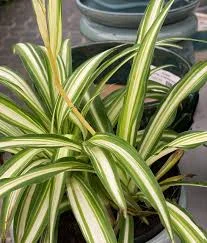
Over 65 percent of Kenya’s arable land is affected by moderate to severe soil degradation, a problem that threatens food security and farm productivity nationwide. The leading causes of this decline include over-cultivation, soil erosion from poor land management, heavy reliance on chemical fertilizers, and widespread deforestation, which removes protective vegetation cover.
These issues have gradually reduced soil organic matter, weakened structure, and limited water retention capacity. As a result, farmers are forced to use more inputs each season while achieving lower yields, creating a cycle of dependency and economic strain.
To reverse this trend, Kenya needs practical, affordable, and sustainable soil regeneration methods. One useful approach is to combine cover crops with biochar, a carbon-rich soil amendment that improves soil fertility and structure.
Safi Sarvi Fertilizer, produced through biochar technology, has emerged as a local solution to help farmers restore degraded soils while reducing the need for synthetic fertilizers.
This integrated approach of using cover crops and biochar represents a cost-effective pathway toward soil recovery.
It supports smallholder farmers, promotes long-term productivity, and aligns perfectly with the principles of regenerative agriculture in Kenya, a movement focused on rebuilding healthy soils, conserving biodiversity, and increasing resilience to climate change.
Understanding Soil Degradation in Kenya
Soil degradation refers to the gradual loss of a soil’s productive capacity, which occurs when its nutrients, organic matter, and physical structure are depleted or damaged.
Healthy soil contains a rich mix of minerals, living organisms, and decayed organic material that together support plant growth. When this balance is disrupted, the soil loses its ability to sustain crops effectively, leading to long-term declines in fertility and yield.
In Kenya, soil degradation is widespread, especially in regions such as Eastern, Rift Valley, and Central Kenya, where farming intensity is high. In Eastern Kenya, erratic rainfall and frequent droughts accelerate nutrient depletion and erosion.
In the Rift Valley, continuous maize and wheat cultivation without proper soil management has stripped away vital nutrients. Central Kenya faces a similar issue, as smallholder farms grow crops on the same plots year after year, leaving the soil tired and less productive.
Farmers across these regions are already witnessing visible symptoms of degradation. Crop yields are significantly lower than they were two decades ago, even with increased fertilizer use.
The soil has become compacted and crusted, making it difficult for roots to penetrate and for rainwater to soak in. Water drains quickly or runs off, carrying away nutrients. Ironically, Many farmers end up buying more chemical fertilizers each season, raising costs without improving long-term soil health.
Conventional fertilizers feed plants temporarily but do not restore soil structure or organic matter. Over time, they disrupt microbial life, leaving soils degraded and farmers trapped in an unsustainable cycle.
This degradation reduces water retention, limits nutrient availability, and weakens crop resilience.
Soils become compacted and less fertile, making it harder for plants to thrive. Sustainable approaches that rebuild organic matter are essential to break this cycle and restore productivity.
What Are Cover Crops and How Do They Work?
Cover crops are plants grown mainly to protect and enrich the soil rather than for harvest. Their purpose is to keep the land covered throughout the year, especially between main crop seasons.
By maintaining soil cover, they prevent erosion, improve fertility, and build healthier soil for future planting. In Kenya, cover crops are a growing part of sustainable farming because they improve soil naturally and reduce the cost of chemical inputs.
One of the main benefits of cover crops is that they prevent erosion and nutrient loss. When land is bare, rainfall can wash away the topsoil, which contains most of the nutrients crops need. ‘
Cover crops shield the soil surface, while their roots hold it firmly in place. This protection also limits nutrient leaching, keeping essential minerals within reach of plant roots.
Another benefit is that cover crops increase soil organic matter. When these plants decompose, they leave behind valuable residues that feed beneficial organisms and improve soil structure. This process helps the soil retain more moisture and nutrients, leading to stronger plant growth.
Leguminous cover crops like cowpeas, lablab, Desmodium, and sunn hemp also fix nitrogen. They do this through bacteria in their root nodules, which convert atmospheric nitrogen into forms that crops can use. This natural enrichment reduces the need for costly fertilizers and promotes long-term fertility.
What Is Biochar and Why Does It Matter
Biochar is a carbon-rich material produced by heating crop waste, such as maize stalks, coffee husks, or rice husks, under limited oxygen conditions, a process called pyrolysis.
This controlled burning turns plant matter into a stable form of carbon that can remain in the soil for hundreds of years. Farmers use it as a soil amendment to improve fertility, enhance structure, and promote sustainable farming practices.
One of the main benefits of biochar is its ability to improve soil structure. Its porous texture allows the soil to retain more water while keeping it well aerated. This helps plants withstand dry periods and reduces the need for frequent irrigation. In addition, biochar binds soil particles together, making the land more resistant to erosion.
Biochar also traps nutrients that would otherwise leach away during rainfall. Its sponge-like surface holds essential minerals such as nitrogen and potassium, releasing them slowly as crops grow.
This improves nutrient efficiency and reduces fertilizer waste, which is vital for smallholder farmers working with limited resources.
Another important role of biochar is feeding beneficial microorganisms. These microbes break down organic matter, cycle nutrients, and maintain soil health. Biochar provides them with shelter and stability, creating a thriving underground ecosystem that supports continuous improvement in soil fertility.
Environmental Importance
Beyond soil benefits, biochar helps the environment by storing carbon that would otherwise return to the atmosphere as carbon dioxide. This process contributes to climate change mitigation, making biochar a valuable tool in regenerative agriculture.
The fertilizer is locally produced using agricultural waste, making it affordable and accessible to Kenyan farmers. Through such innovations, biochar supports the growth of regenerative agriculture in Kenya, where healthy soils are the foundation of long-term food security.
Step-by-Step Guide for Kenyan Farmers
Farmers across Kenya can easily adopt a combined system of cover crops and biochar to restore soil fertility and boost yields. The process is simple, practical, and adaptable to both smallholder and larger farms. When done consistently, it transforms degraded soils into rich, productive land that supports long-term food security.
Step 1: Choose the right cover crop for your region
Selecting the appropriate cover crop depends on local climate and soil conditions. In dry zones such as parts of Eastern Kenya, cowpeas perform well because they tolerate drought and fix nitrogen effectively.
In highland areas with cooler temperatures, lablab or Desmodium are suitable options as they provide dense ground cover and improve soil structure.
Step 2: Plant cover crops after harvest or between main crops
After the main crop is harvested, farmers should plant their selected cover crops immediately. This ensures that the soil remains covered, preventing erosion and nutrient loss. Some farmers also plant cover crops between rows of maize, coffee, or fruit trees to protect the soil throughout the growing season.
Step 3: Apply Safi Sarvi Fertilizer or biochar during soil preparation
When preparing the land, applying Safi Sarvi Fertilizer or pure biochar enhances the soil’s nutrient-holding capacity. The biochar provides a long-term carbon base, while the organic nutrients in Safi Sarvi give crops a healthy start.
Mixing these materials into the topsoil ensures that the benefits reach plant roots directly.
Step 4: Let cover crops grow and protect the soil
Once established, cover crops should be allowed to grow for several weeks or months, depending on the farming calendar.
During this period, their roots bind the soil, prevent erosion, and increase microbial activity. Farmers should avoid removing the plants early, as this limits the organic matter they contribute later.
Step 5: Incorporate the biomass into the soil before planting the main crop
Before planting the next main crop, the mature cover crops are cut down and lightly ploughed into the soil.
As the biomass decomposes, it adds organic matter and nutrients that improve soil fertility. This step is crucial because it releases nitrogen and other minerals that support the next crop’s growth.
Step 6: Monitor soil health season by season
Farmers should observe changes in soil texture, water retention, and yield quality each season. Improved soil often feels looser, holds more moisture, and requires less fertilizer input.
By tracking these results, farmers can adjust their cover crop species or biochar applications to achieve even better outcomes.
This simple step-by-step process helps Kenyan farmers practice regenerative agriculture, ensuring that every planting season improves the soil rather than depleting it.
Economic and Environmental Benefits
Economic benefits are among the most immediate results farmers notice. By using cover crops that fix nitrogen and build soil fertility, farmers reduce their dependence on costly chemical fertilizers.
Fr example, Biochar fertilizer holds nutrients in the soil for longer periods, meaning crops make better use of each application. Over time, the soil becomes self-sustaining, allowing farmers to spend less on inputs while still maintaining or even increasing yields.
Improved soil structure also supports long-term productivity. Healthy soil retains moisture and nutrients, which helps crops grow well even under unpredictable weather.
This resilience is especially important for smallholder farmers who rely on rain-fed agriculture. With stronger soils, they can endure droughts better and secure consistent harvests season after season.
The environmental benefits
Cover crops reduce runoff and erosion by keeping the soil covered year-round. This protection keeps rivers and water sources cleaner by preventing fertilizer and sediment from washing away.
At the same time, the diverse plant roots foster greater biodiversity in the soil, creating habitats for beneficial insects and microorganisms that sustain healthy ecosystems.
Biochar contributes to carbon sequestration in soil. Instead of releasing carbon dioxide into the atmosphere, carbon remains locked underground for decades or even centuries. This helps reduce greenhouse gas emissions and supports Kenya’s climate goals.
The combination of biochar and cover crops turns farms into small carbon sinks that naturally fight climate change.
Common Mistakes to Avoid When Using Biochar
While cover crops and biochar bring tremendous benefits, farmers can lose much of their potential if they are not used correctly.
One common mistake is choosing the wrong cover crop for the region. Each area has unique rainfall, temperature, and soil conditions that affect performance. For example, cowpeas thrive in dry zones like Eastern Kenya, while lablab and Desmodium do better in cooler highlands.
Selecting unsuitable crops often leads to poor growth and limited soil improvement. Farmers should always seek advice from agricultural officers or seed suppliers before planting.
Burning Cover Crops
Another frequent error is burning cover crop residue instead of incorporating it. Burning removes valuable organic matter and kills soil organisms that aid decomposition.
The best method is to cut mature cover crops and mix them gently into the soil. As they break down, they release nutrients that feed future crops and improve soil texture. This process is key to maintaining long-term fertility.
Using Raw Charcoal
A third mistake involves overapplying biochar or using raw charcoal instead of activated biochar. Raw charcoal can contain harmful substances that damage roots. Properly prepared biochar, activated through pyrolysis and often mixed with compost, enhances soil health safely.
Lastly, farmers should avoid mixing chemical fertilizers and biochar simultaneously. Some fertilizers may react with biochar, reducing the biochar’s nutrient retention capacity.
It is better to apply biochar first during land preparation, then add fertilizers once crops start growing. This sequence improves efficiency and crop performance.
In conclusion, cover crops and biochar fertilizer have become vital tools for rebuilding soil fertility. Cover crops add organic matter and fix nitrogen, while biochar improves soil structure and nutrient retention.
Together, they create living, self-sustaining soils that boost yields, lower input costs, and support environmental conservation.





Useful information, I’ve learned a lot especially in biochar which of late I’m following keenly. Thanks keep it up